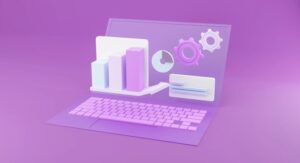
How Windows 11 Pro Boosts Productivity and Security for Modern Students and Professionals?
The digital era has transformed the way we learn and work. From online courses to remote collaboration, technology has become a cornerstone of modern productivity.
For students and professionals alike, having the right digital tools can significantly enhance efficiency and ensure secure access to critical resources. Windows 11 Pro stands out as a pivotal solution for those looking to elevate their online learning and working experiences.
This article delves into essential digital tools and software for online learners, highlighting how Windows 11 Pro enhances productivity, security, and overall user experience. Upgrade your license key for Windows 11 Pro to take full advantage of its robust features.
How Does Windows 11 Pro Enhance Work Productivity and Security?
Essential Tools for Online Learning and Collaboration
Online learners increasingly depend on versatile tools that support diverse tasks. Cloud-based platforms like Google Drive and OneDrive provide flexibility, allowing students and professionals to access files from any location.

For instance, a student attending virtual classes can save lecture notes in the cloud and retrieve them from a library computer later.
Another key resource is note-taking software. Tools like Microsoft OneNote and Evernote allow users to create structured notes, share them with peers, and integrate multimedia elements. These apps are especially valuable for group study sessions or collaborative projects where efficient information sharing is essential.
Video conferencing platforms such as Zoom and Microsoft Teams have become staples in virtual classrooms and remote work settings.
They offer breakout rooms for focused discussions, screen-sharing capabilities, and seamless integration with document-sharing tools. For users who multitask with such platforms, having an operating system that supports these functions smoothly is crucial to maintaining efficiency.
Redefining Security in the Digital Age
Cybersecurity remains a top concern for learners and professionals handling sensitive data. Features like BitLocker encryption and biometric authentication systems such as facial recognition have set new standards for safeguarding information.
For example, a freelance writer storing client contracts on their laptop benefits from encryption that ensures unauthorized access is blocked even if the device is stolen.
Virtualization-based security (VBS) creates isolated environments for critical processes, mitigating risks from malware or phishing attempts. Professionals who deal with sensitive business documents, such as financial reports or confidential strategies, can rely on such measures to maintain confidentiality.
Furthermore, native antivirus solutions integrated within modern operating systems provide real-time threat detection. This eliminates the need for third-party applications, simplifying the user experience while offering strong protection against evolving cyber threats.
Boosting Productivity Through Smarter Workflows
Efficiency is at the heart of successful learning and work strategies. Advanced operating systems now include features like Snap Layouts, which allow users to arrange applications into predefined configurations.

For instance, a university student can divide their screen into quadrants to simultaneously view a research article, their essay draft, and an online thesaurus.
Virtual desktops are another game-changing feature, enabling users to create separate spaces for different tasks. A professional might have one desktop dedicated to email and scheduling, while another focuses on graphic design software. By reducing clutter and providing a distraction-free environment, these tools make multitasking more manageable and effective.
Additionally, features such as DirectStorage reduce the time needed to load files and applications. This benefit is particularly valuable for users running resource-intensive programs like video editing software or simulation tools.
Exploring Advanced Software for Online Learners
Specific software solutions complement modern operating systems to create a powerful learning environment.
Grammarly, for example, improves communication by offering grammar and style suggestions, making it ideal for students writing essays or professionals drafting reports. Time management apps such as Asana and Trello help users stay on top of deadlines and collaborate on projects efficiently.
Mind-mapping tools like MindMeister or XMind allow users to break down complex concepts into visual diagrams.
For instance, a business student could map out a marketing strategy, linking ideas and resources for better comprehension. These applications work seamlessly with professional-grade operating systems that support real-time syncing and integration.
Encouraging Wellness Through Technology
Excessive screen time has led to concerns about digital wellness. Modern operating systems address these issues with features such as blue light filters and dark modes, reducing eye strain for users who spend long hours at their computers.
Tools like Focus Sessions integrate productivity with mindfulness by encouraging users to take breaks between concentrated work intervals.
For younger learners, parental controls help establish healthy digital habits by setting screen time limits and blocking inappropriate content. These features make technology not just a tool for productivity but also a means of fostering balance in a digitally connected lifestyle.
Supporting Creative Endeavors with High-Performance Features

For students and professionals in creative fields, having a system that supports demanding applications is essential. Digital artists, for example, benefit from touchscreen and stylus compatibility, allowing them to use tools like Adobe Photoshop and CorelDRAW with precision.
Graphic designers working on complex projects can rely on features such as enhanced DirectX support for smooth rendering and AutoHDR for vivid visuals. Such high-performance capabilities not only streamline creative workflows but also enable artists and designers to produce their best work efficiently.
Preparing for the Future with Advanced Compatibility
The rapid pace of technological change requires systems that are adaptable and forward-compatible. From virtual reality learning modules to sophisticated data analysis programs, the latest operating systems support a broad range of technologies.
For example, engineering students using AutoCAD or architecture professionals running 3D modeling software can rely on stable performance and frequent updates to stay ahead in their fields.
Regular updates also ensure compliance with emerging standards and improve overall system security. This adaptability positions modern tools and systems as essential allies for students and professionals preparing for future challenges.
Customizing the Digital Environment for Individual Needs
One of the standout advantages of advanced operating systems is their ability to adapt to individual preferences and workflows. For students, this customization can make all the difference in their ability to focus and stay organized.
Features like personalized taskbars, theme settings, and shortcut configurations allow users to create a workspace that feels intuitive and comfortable.
For instance, a professional working in project management might prioritize a clean desktop with quick-access shortcuts to frequently used tools like Microsoft Teams, Excel, and Trello.
Meanwhile, a student might use virtual desktops to separate their study materials from entertainment applications. These personalization options ensure that the digital environment aligns with the user’s unique needs, reducing distractions and improving efficiency.
Beyond aesthetics, accessibility features further enhance this adaptability. Text-to-speech functions, adjustable font sizes, and color contrast options cater to diverse learning styles and physical needs, ensuring that all users can benefit equally from their digital tools.
Strengthening Remote Access and Cross-Device Functionality

In an era where remote work and online education dominate, the ability to access information from multiple devices is essential. Professional-grade operating systems excel in this area by providing seamless cross-device functionality.
For example, a student working on a group project can start editing their presentation on a laptop at home, save it to the cloud, and continue refining it later from a tablet while commuting.
This level of flexibility is bolstered by robust remote access tools. Professionals managing sensitive data can securely connect to their office systems through encrypted channels, ensuring that they remain productive even while traveling.
Students attending virtual classes from different locations benefit from the same secure and efficient access to learning materials and platforms.
Moreover, integration with cloud storage services like OneDrive ensures that files are automatically synchronized across devices.
This eliminates the need to manually transfer data and reduces the risk of losing important documents. Such cross-device functionality exemplifies how advanced operating systems bridge the gap between convenience and reliability.
A Unified Approach to Productivity and Security
Advanced operating systems have redefined the digital experience for modern students and professionals by providing a balance of productivity, security, and adaptability.
Through robust security features like encryption and biometric authentication, users can confidently safeguard their sensitive information. Additionally, customizable workspaces, including taskbars, virtual desktops, and personalized themes, create an environment tailored to individual needs, helping users focus and stay organized.
Seamless cross-device functionality and remote access capabilities further enhance efficiency. Files, settings, and applications synchronize effortlessly across devices, allowing users to transition smoothly between locations and tasks.
Whether it’s a student completing a group project or a professional managing business data while traveling, these tools ensure uninterrupted workflows and secure access.
Moreover, accessibility features make these systems inclusive, accommodating diverse learning styles and physical requirements. Paired with high-performance compatibility for demanding applications and tools to promote wellness, such as screen-time management and focus aids, these operating systems empower users to thrive in a fast-paced digital landscape.
By integrating these advanced features, modern operating systems provide a future-proof foundation for students and professionals alike, enabling them to meet today’s challenges and prepare for tomorrow’s opportunities.
Author Profile

- Blogger by Passion | Contributor to many Business and Marketing Blogs in the United Kingdom | Fascinated with SEO and digital marketing and latest tech innovations |
Latest entries
 Digital MarketingApril 11, 2025Digital Marketing Tactics That Generated £1M in Revenue for UK Retailers
Digital MarketingApril 11, 2025Digital Marketing Tactics That Generated £1M in Revenue for UK Retailers Web DesignApril 11, 2025UK Digital Trends: Top Website Building Solutions for 2025
Web DesignApril 11, 2025UK Digital Trends: Top Website Building Solutions for 2025 TechnologyMarch 31, 2025The Future of Text-to-Speech: Transforming Communication in Healthcare
TechnologyMarch 31, 2025The Future of Text-to-Speech: Transforming Communication in Healthcare TechnologyMarch 28, 2025Top-Rated Tools Every Modern Recruiter Needs in Their Toolkit
TechnologyMarch 28, 2025Top-Rated Tools Every Modern Recruiter Needs in Their Toolkit

